Sharpal 191H Knife Sharpener In-depth Review
The Sharpal 191H knife sharpener is affordable and does give a sharp edge, but it can be annoying to use. Read our hands-on review to find out more.
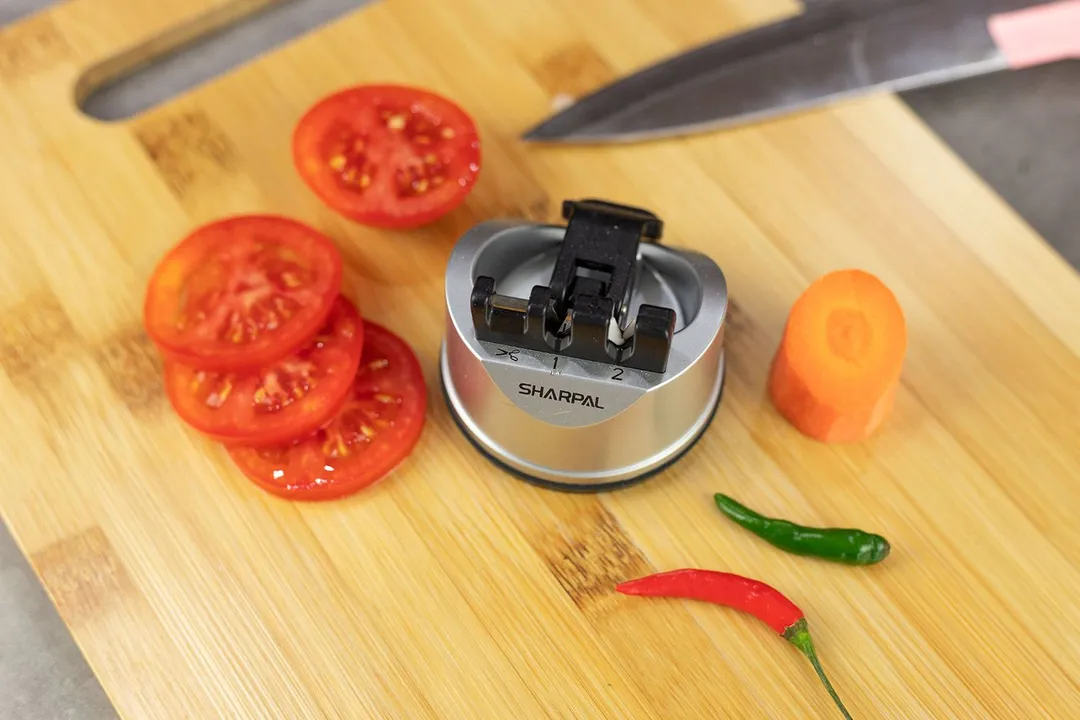
Overall Verdict
The Sharpal sharpener is a device where every strength seems to be accompanied by an equally critical weakness.
With this sharpener, your knife can reach a decent level of keenness but not without sacrificing a lot of steel. Its suction cup offers a sense of safety as you don’t have to hold it with your hand, but it’s a little picky about the surfaces it sticks on.
It’s affordable, but there are better sharpeners in the same price range.
Things We Like
- Small footprint
- Affordable price
- One-handed sharpening (when the base works)
Things We Don’t Like
- Suction cup only works on particular surfaces
- Ceramic blades don’t seem to work
Mini suction cup sharpeners are affordable and great for small spaces, but they have a lot of limitations compared to other sharpeners. They can only handle medium to small knives, and their stability tends to depend too much on the type of countertop or table surface. The SunrisePro can serve as a prime example of this.
Compared to the SunrisePro, the Sharpal 191H has a larger size but more lightweight body. It’s also one of the best-selling products from a brand that specializes in sharpeners, whetstones, and honing rods. Will all that save it from those issues?
We tested it and here’s our take on the results.
Key Specs
Where to Buy Price at publication $13.93
*You help support HealthyKitchen101's product testing and reviews by purchasing from our retail partners.
Compared to Other Manual Knife Sharpeners
7.0 Performance
The Sharpal can rejuvenate your dull knife, leaving it capable of carrying out most food prep tasks, but it takes a while to get there. It also creates a finer edge than most other two-stage devices despite removing quite an alarming amount of steel from the blade.
6.4 Sharpening Time to Cut a Lemon
The Sharpal takes a total of 105 seconds to sharpen a dead dull knife to a high level of workable sharpness (lemon-cutting level). We suspect that the 15 seconds on the ceramic slot may have been a waste of time — the knife emerged keener before rather than after going through the slot.
8.0 Maximum Sharpness Achieved
After 6 minutes of continuous sharpening with the Sharpal, the test knife managed to cut through a piece of raw chicken breast with ease. Similarly, ripe tomatoes posed no challenge — we could produce thin tomato slices using only the knife’s modest weight. So while it’s not particularly fast, the device does fulfill its promise of bringing sharpness to your knife edge if you give it enough time.
6.7 Material Retention

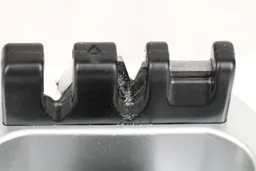
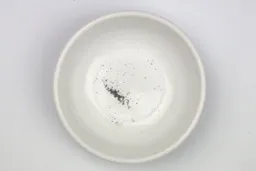
Many users advise against using the Sharpal 191H on your expensive knives and we agree with them. This test lasted 1 minute, and the device managed to shred quite a lot of steel off our test knife. Note that although the knife edge was blunted using sandpaper for 45 seconds before this test, it had previously been sharpened on the Sharpal itself, so it wasn’t like the edge needed ‘resetting’. This level of metal removal is excessive. If your knife has a nice, beautiful edge that you’d like to maintain, it’s probably not a good idea to let it meet this sharpener.
7.5 Edge Smoothness

We didn’t feel its ceramic rod did anything to refine the edge, but the Sharpal did produce a nice edge overall. Granted, its tungsten carbide blades created deep grooves, but the grooves were straight and steady. There were no major signs of deformities, such as chips or burrs along the edge.
7.2 Design
The Sharpal has a cool look, and important parts such as the lever and base appear to be made with high-quality materials. However, we think a larger size and more substantial weight would serve it better.
In the Box

- The Sharpal 191H sharpener
- User manual
The Sharpal comes in a small and thin cardboard box along with a simple user manual. It’s compact and lightweight, so if you’re looking for a small device to use in emergencies or at your vacation home, this sharpener may be a good choice.
Dimensions
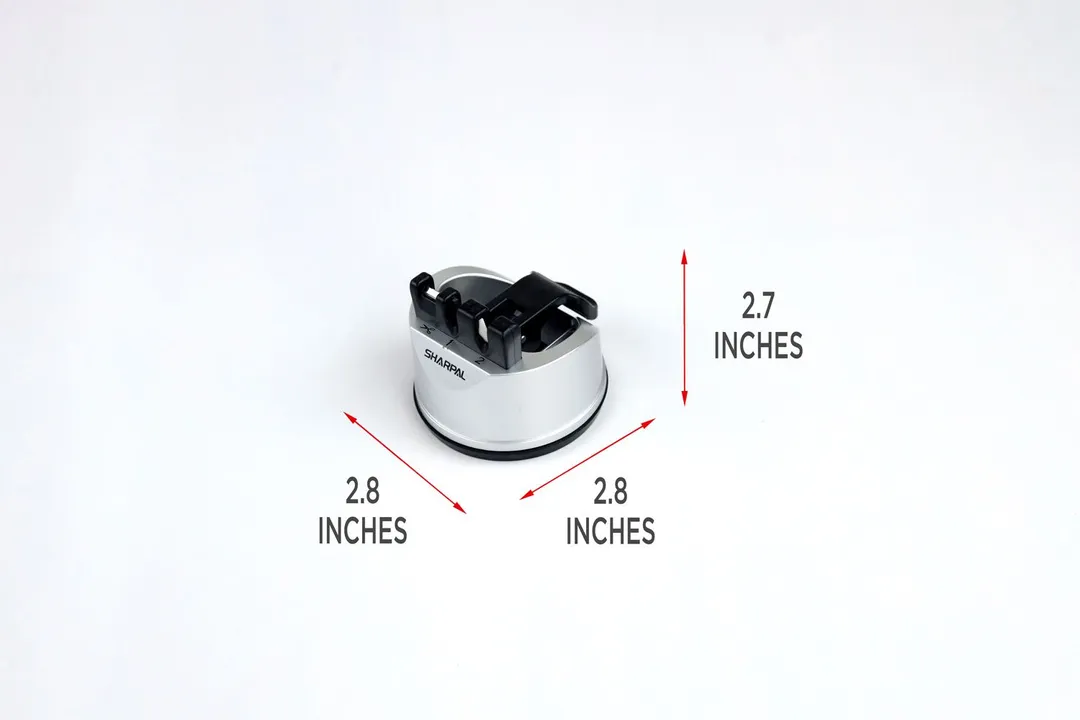
7.2 Build Quality

The device is lightweight and doesn’t feel solid; however, its construction is as sturdy as it can be. Its tungsten carbide blades are shinier than any other we’ve seen, and we liked the thick, strong base.
Both testers agreed that a larger lever would be easier to work with. We also think more substantial ceramic blades with a smaller edge angle would do better in polishing the edge without blunting it.
The fit and finish is decent, except for some blemishes on the black frame at the working section.
7.0 Grip
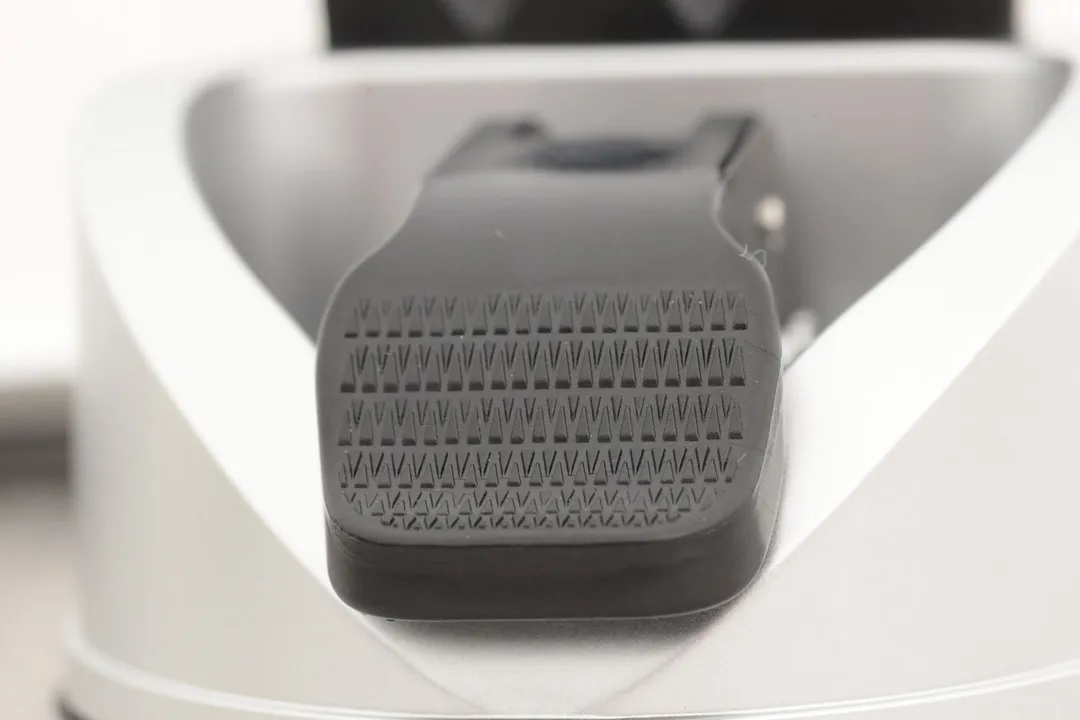
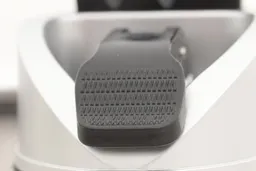
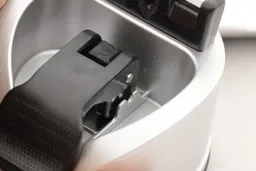
The lever is sturdy and strong, and we appreciate the raised patterns that work to prevent your thumb or palm from sliding off while you’re pushing it down. That being said, a bigger lever size would eliminate the challenge in the first place.
Working Section
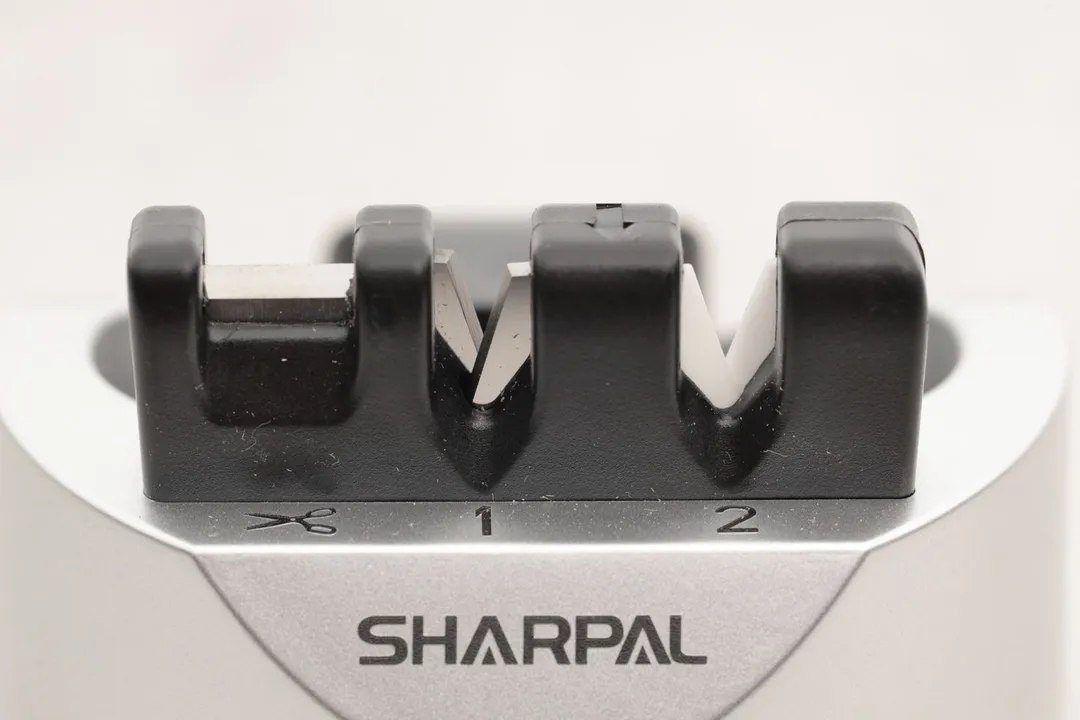
The Sharpal’s working section is a small, raised crown that almost looks frail. At first glance we actually expected it to come off after the first few uses, which it never did. On the contrary, it was completely stable and secure during sharpening. We don’t think it’s made for larger knives, though.
Base
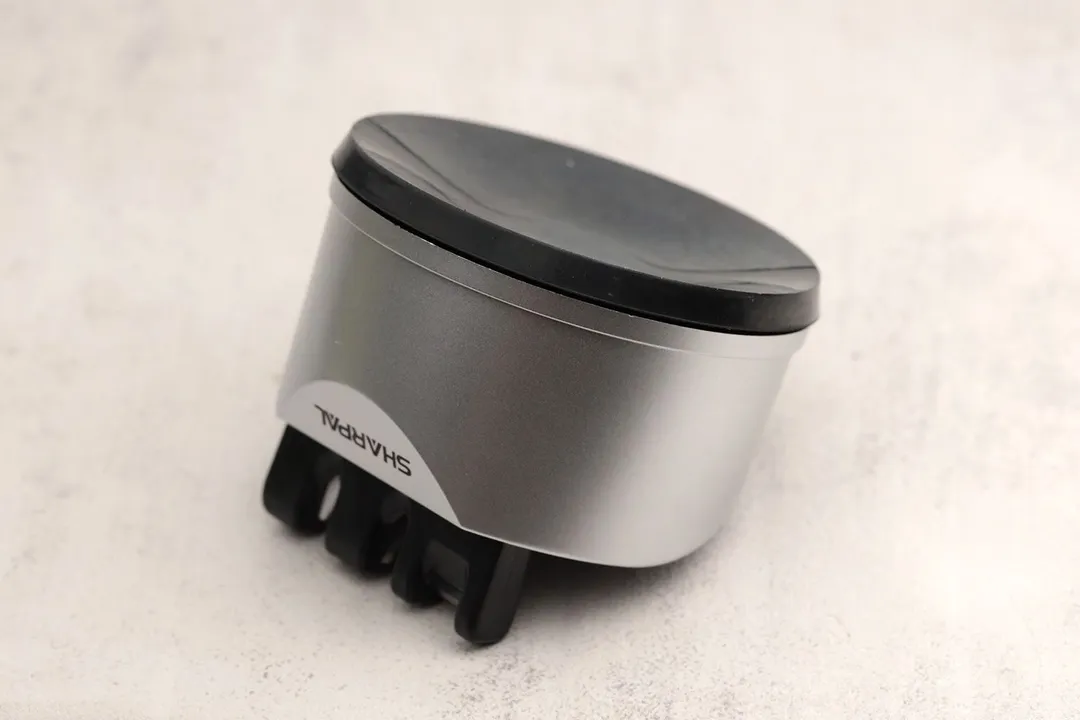
The Sharpal’s base is a suction cup. It’s large and thick and connected to a lever which activates the suction when pushed down.
There’s one little issue with this design. The harder the cup sucks onto the surface, the heavier the lever will feel. So, if it’s the right surface, you actually have to use a lot of force to push it down. Sometimes a thumb is not enough, and using the palm on the small lever can hurt.
The suction cup works great on a completely flat and fine surface, such as a marble countertop. On a wooden table, you’ll have to readjust it a couple of times before you finish sharpening a knife with it.
7.2 Ease of Use
Effective use of the Sharpal may involve a small learning curve: You’ll have to learn the right direction to pull your knife, what kinds of surfaces are suitable, and how much water you should add to maximize the suction cup’s effectiveness. But even after all that, a smooth sharpening experience wouldn't be guaranteed.
6.5 Slot Arrangement

Other than a slot for shears and scissors, the Sharpal employs a basic slot layout with one for sharpening and one for honing. There are numbers at the front to suggest the order plus an arrow to show you the right direction to pull your knife.
However, by intuition, first-time users are likely to have the lever face them and risk sharpening in the wrong direction. We actually did that twice. While we don’t think it’d do any harm to the blade, some minor design adjustments would make it totally avoidable.
9.0 Insertion
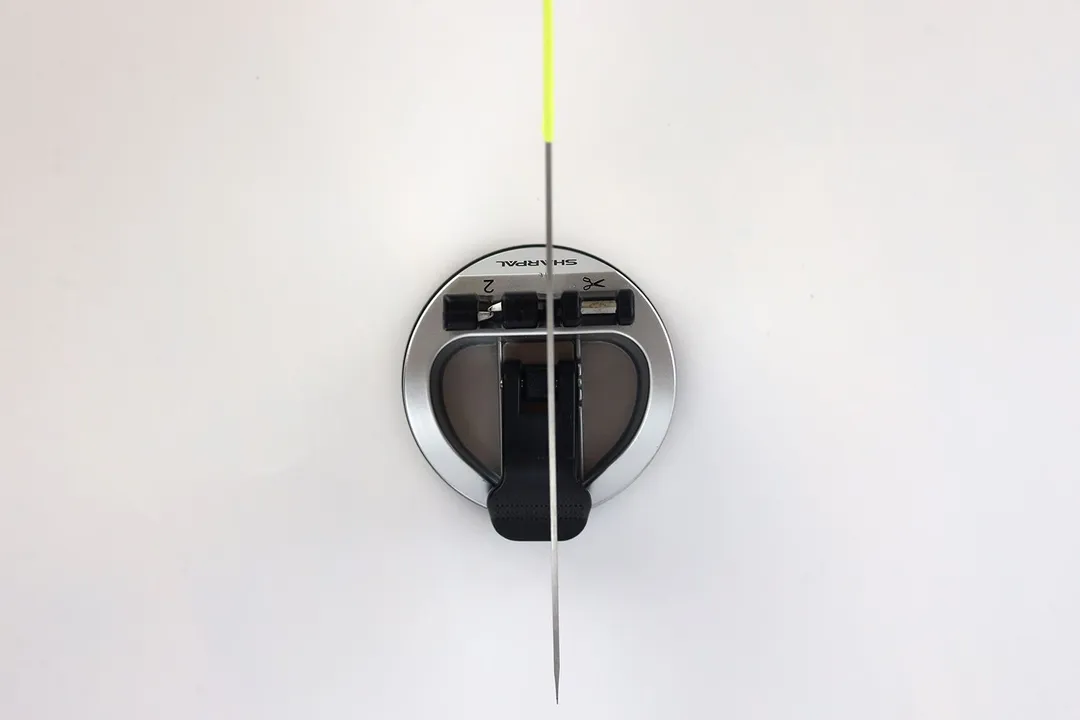
While its slot openings are not particularly large, we never had a problem placing the knife into the right position. Not having to hold the device in place with your hand probably gives some confidence, thus improving precision.
6.0 Pulling Through
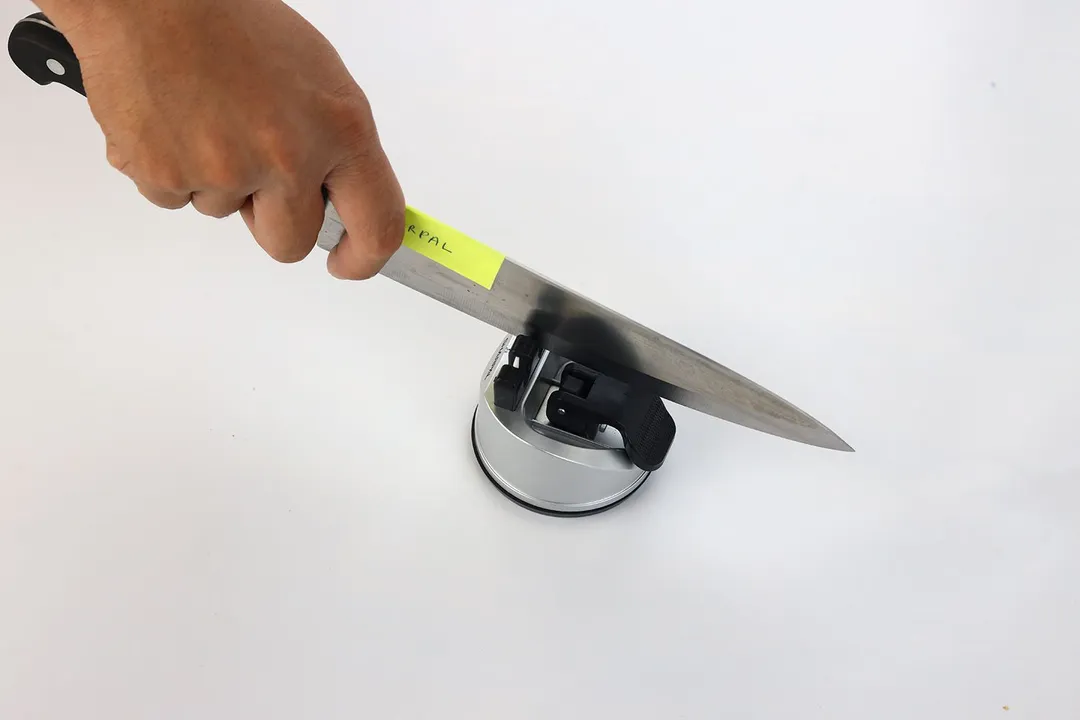
Pulling through was awkward. The test knife experienced great friction, especially near the knife heel when going through Slot 1 (the tungsten carbide blades). Slot 2 was smooth sailing, but it felt like we were actually blunting the knife edge rather than polishing it.
To its credit, the device is designed in a way that makes it unlikely to nick the frame as you finish a stroke, which is a problem on many other pull-through sharpeners.
8.0 Stability on a Clean Surface
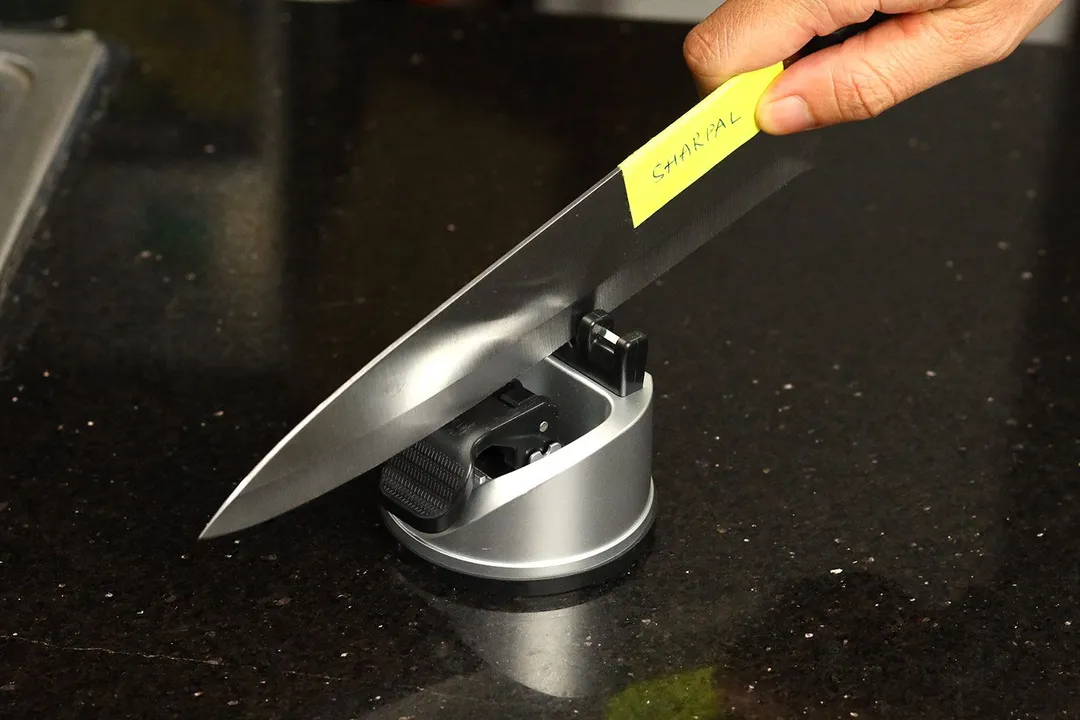
The suction cup works great on the right surface: The device never moved or wobbled, and contrary to our predictions, the delicate-looking working section was as stable as a fort.
Its minus points are the enormous force you have to apply to push the lever down, and the loss of suction over time—one reason the device is not suitable for binge sharpening.
3.0 Stability on a Wet and Dirty Surface

While some moisture may help with increasing friction, the suction cup is useless on a countertop stained with salt and oil. Technically, you can still use the device if you hold it with your hand, but because the sharpener is so small, it was difficult and dangerous to do so.
Behind the review
Anh Ngo is a writer with 9 years experience at different media outlets, covering from public news and events to product testing and analysis. At HealthyKitchen101, she works across different departments, communicating closely with its network of writers, editors, and health, tech, and search engine experts to provide a meaningful and pleasant reading experience for visitors.
Lap is Head of the Research, Testing, and Review Team (RTR Team) at HealthyKitchen101.com, where he directs and supervises the testing of kitchen gadgets and appliances.
Nguyen Ntk is a graphic designer, photographer, and videographer whose philosophy centers around respecting and celebrating the beauty of reality. Through his lenses, Nguyen strives to capture the true essence of objects and events, showcasing and highlighting authentic features without distortion or exaggeration.


